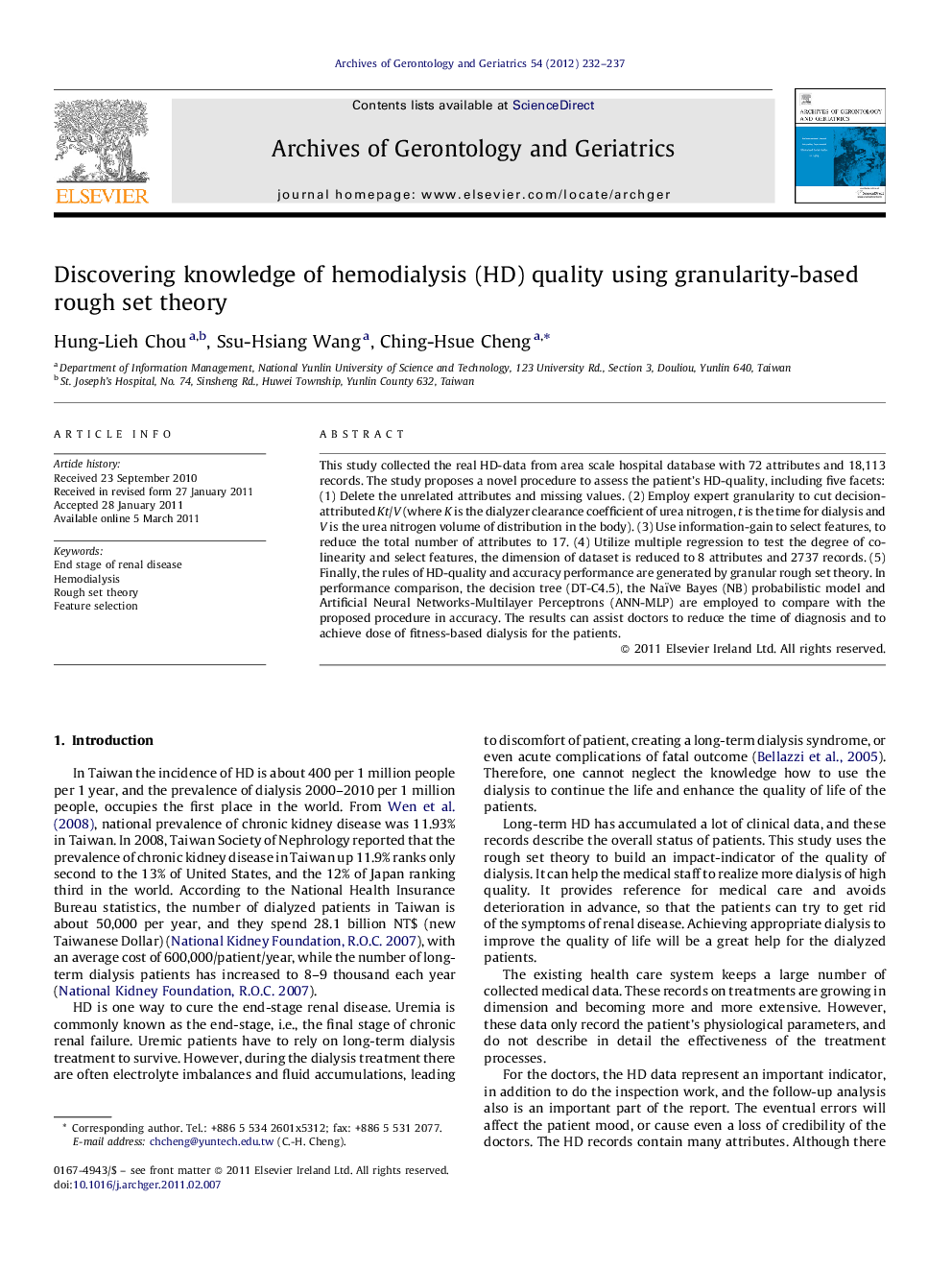| Article ID | Journal | Published Year | Pages | File Type |
|---|---|---|---|---|
| 1903193 | Archives of Gerontology and Geriatrics | 2012 | 6 Pages |
This study collected the real HD-data from area scale hospital database with 72 attributes and 18,113 records. The study proposes a novel procedure to assess the patient's HD-quality, including five facets: (1) Delete the unrelated attributes and missing values. (2) Employ expert granularity to cut decision-attributed Kt/V (where K is the dialyzer clearance coefficient of urea nitrogen, t is the time for dialysis and V is the urea nitrogen volume of distribution in the body). (3) Use information-gain to select features, to reduce the total number of attributes to 17. (4) Utilize multiple regression to test the degree of co-linearity and select features, the dimension of dataset is reduced to 8 attributes and 2737 records. (5) Finally, the rules of HD-quality and accuracy performance are generated by granular rough set theory. In performance comparison, the decision tree (DT-C4.5), the Naïve Bayes (NB) probabilistic model and Artificial Neural Networks-Multilayer Perceptrons (ANN-MLP) are employed to compare with the proposed procedure in accuracy. The results can assist doctors to reduce the time of diagnosis and to achieve dose of fitness-based dialysis for the patients.
